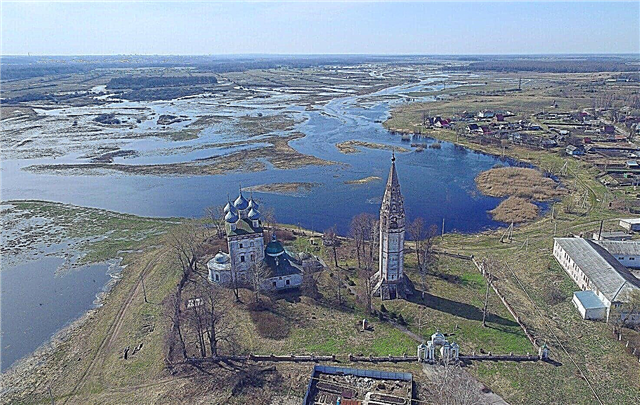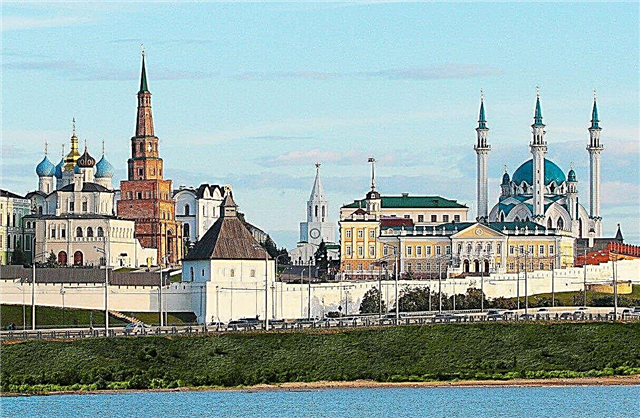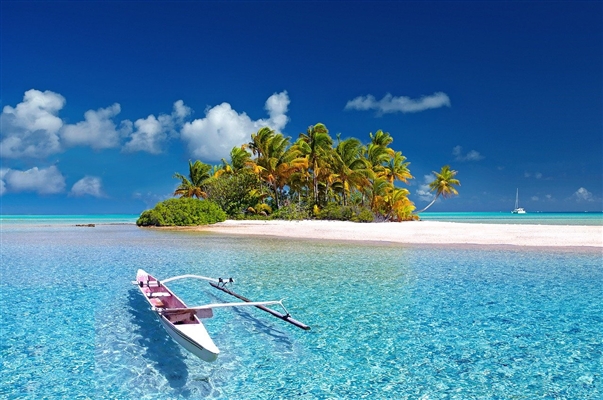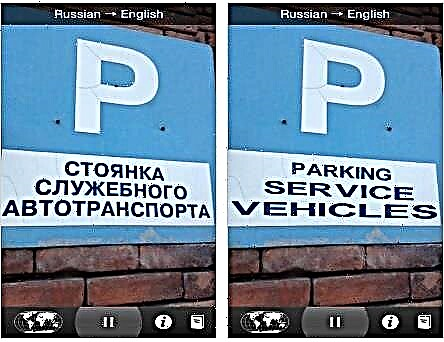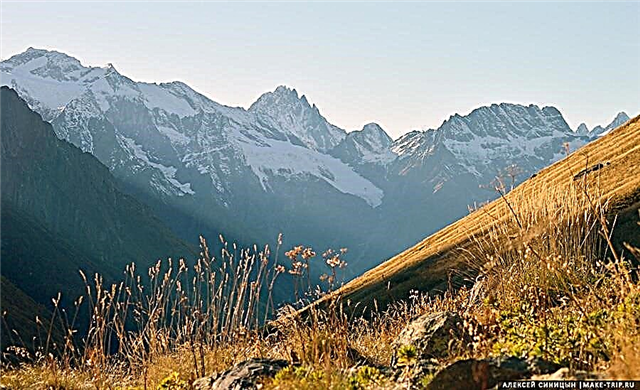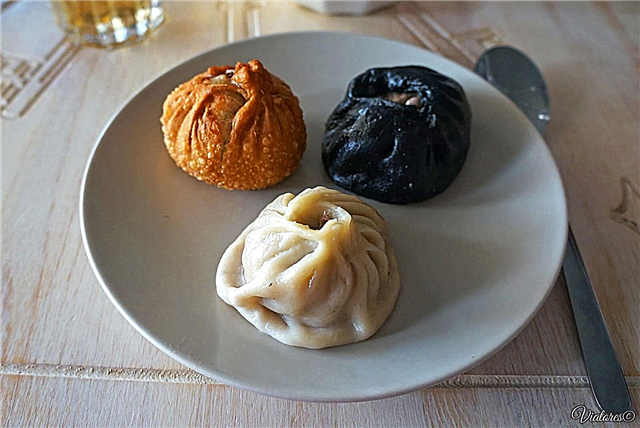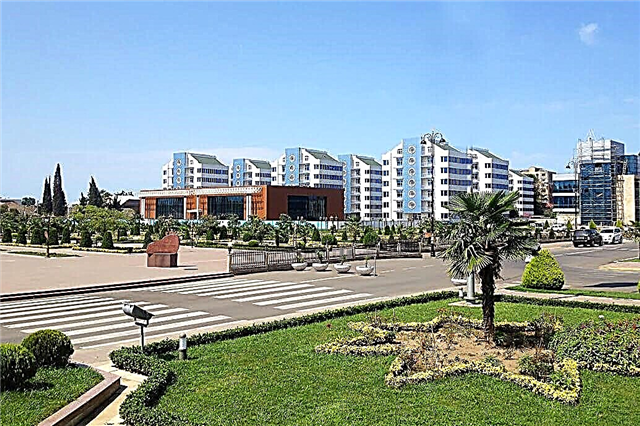There are only 4 large cities in Azerbaijan. The smallest of the list has less than 18 thousand inhabitants, but the capital has surpassed the mark of a million and a quarter. Baku has become not only the most significant port of the Caspian Sea, but also the largest city in the Caucasus. Part of the country is located in a seismically active zone, so earthquakes over the long history of the settlement of these lands have destroyed many historical monuments.
However, excavations are being actively carried out here, which have led to the discovery of many archaeological sites. For example, not far from Kurdamir, a medieval settlement with a cemetery was found. Do not forget that Islam is widespread in Azerbaijan, therefore there are mosques in every city. The mosque in Khachmaz is especially curious: it is incorrectly oriented in relation to Mecca.
The largest cities of Azerbaijan
List of the largest cities in terms of population in the country.
Baku
The capital of Azerbaijan, the largest port of the Caspian Sea and the largest city in the Caucasus. Districts of Baku contrast with each other: some resemble a metropolis with skyscrapers and bright lights even at night, while in others old buildings have survived, although most have been restored. Palace of the Shirvanshahs, Martyrs' Alley, Museum of Miniature Books, Icheri-Sheher Quarter, Maiden Tower are the main beauties of the city.
Population - 1,259,300 people (2019).

Sumgayit
A young city on the coast of the Caspian Sea. The capital is only 30 kilometers away. In memory of the conflict between Azerbaijanis and Armenians in the 80s of the last century, a monument was erected in Sumgayit. The surrounding beaches are covered with tiny shells. For sports, a stadium and a tennis center with four courts are available. A water park has been opened, where there are recreation areas for both adults and children.
Population - 341 200 people (2018).

Ganja
Until the beginning of the 19th century, it was the capital of the Ganja Khanate. Park "Khan's Garden" is a green exotic corner where you can relax your body and soul. Another park, more strict and restrained, is called “Nizami Ganjavi”. Javad Khan Street with its walking area is picturesque in any month of the year. The former Lutheran church was given over to a puppet theater. And the Orthodox Alexander Nevsky Church receives parishioners to this day.
Population - 332 600 people (2017).

Mingachevir
These lands were inhabited for a long time, but the city in its current form began to take shape only in the 40s of the last century. At the same time, a hydroelectric power plant was built here. Recreation centers rise on the coast, motor ships supervise the reservoir, fishing and spearfishing are available most of the year. The main attraction is the ancient settlement of Sudagalan.
Population - 104 955 people (2019).

Nakhichevan
Located near the border with Turkey and Iran. There are several iconic mausoleums in the city: Noah's mausoleum dating from the 16th century, Momine Khatun mausoleum with painted 25-meter walls, Gulistan mausoleum - a perfectly preserved example of medieval architecture. The Julfa caravanserai, an architectural monument of the 12th century, is located near the city.
Population - 78,900 people (2017).

Yevlakh
A transport hub on the Kura River. The architecture is dominated by the oriental style, although Yevlakh did not remain without the Soviet legacy. There are not so many modern facilities, among them the stadium and the Olympic complex in the suburbs. In addition to the folk theater, a puppet theater was also opened. The valley is covered with green meadows contrasting with the snow-capped peaks of the Lesser Caucasus.
Population - 62 800 people (2019).

Lankaran
It was founded as a trading city in the 10th century. Lankaran has contrasting landscapes: a lot of greenery due to the subtropical climate, in the west there are snow-capped mountain peaks, and on the east side there are beaches covered with black sand. The water level of the Caspian Sea dropped, so the local lighthouse ended up within the city limits. The fortress of the 18th century has been preserved. There are two mosques on its territory.
Population - 52,534 people (2018).

Jalilabad
The current name was given to the city in 1967 in honor of the writer Jalil Mammadkulizadeh. Locals grow grapes and make wine en masse. There are about 50 historical monuments scattered around the district. Among them: the Yeditepe and Bedzhiravan burial mounds, as well as the Gazan palace. The nearby forests are home to many species of animals. Jalilabad region borders with Iran.
Population - 43 300 people (2012).

Goychay
The translation of the name is "blue river". On the north side, the city is supported by the Akhal-Mahal mountains, and on the east - the river of the same name. The Surkhay fortress, erected during the Arab Caliphate, the underground bathhouse of the 18th century, the Abulfaz lil Abbas mosque are significant objects for the city. You can learn more about them and other attractions in the Historical Museum. His collection is small in size but comprehensive.
Population - 42,500 people (2016).

Khachmaz
Located on the Kudialchay river. The city is surrounded by orchards. The Juma Mosque is incorrectly located in relation to Mecca due to the mistake of the designers In the Park of Cultural Workers, busts of honored art workers are installed. Conditions for recreation have been created not far from Khachmaz on the Caspian Sea coast. The beaches are sandy and pebbly. You can rent boats, boats and diving equipment.
Population - 39,900 people (2012).

Barda
Located east of the Murovdag ridge. Earthquakes have prevented many historical sites from surviving to this day. Of the surviving ones, the most interesting are: the tower mausoleum of the XIV century, the ruins of the Akhsadan Baba mausoleum of the same period, the Ibrahim mosque with four minarets. Also in the vicinity there are the ruins of a medieval fortress and the Ugurbeyli mosque from the village of the same name.
Population - 38,500 people (2012).

Salyan
It was based on the old caravan route and occupies the lands of the right bank of the Kura River. The stadium of the local club "Mugan", which plays in the highest football league of Azerbaijan, accommodates 5,000 spectators. The best hotel in Salyan is called Kur. A park named after Heydar Aliyev is laid out next to it. The Shirvan National Reserve is located not far from the city.
Population - 36 800 people (2012).

Imishli
Located on the left bank of the Araks River. The building of the local history museum was built in the national style. There is a hydroelectric power station and a sugar factory. The main arena of the city is the stadium named after Heydar Aliyev. A monument was also erected to the former president. There are sculptures and busts of artists in Imishli, for example, the poets Sabir and Samed Vurgun.
Population - 35,500 people (2017).

Agdash
The city of the central part of Azerbaijan. In 1999, Aghdash was damaged by an earthquake and was fully rebuilt. In 2019, the Solodkovsky industrial park was launched. There is a local history museum, and an excursion tour includes an inspection of the ruins of fortresses and defensive fortifications. A park named after Heydar Aliyev with a spruce forest included in it was laid out.
Population - 31,700 people (2016).

Zagatala
It is spread out in the foothills of the Main Caucasian ridge. The area is wooded, the Talachay River adds beauty to the local landscapes. The tourism sector is developing: more and more holiday homes are opening, there are several sightseeing excursion routes. There are many monuments in Zagatala. Among others, a full-length sculpture of the former president has been installed in the Heydar Aliyev Central Park of Culture and Recreation.
Population - 31 300 people (2013).

Sabirabad
At this place in the past there is an important trading post connecting Europe and Asia. The current settlement began to form in the middle of the nineteenth century. Two main monuments of architecture and culture appeared in the city in the early years of the XX century: Old Haram and the Shamakhi mosque. The Olympic Sports Complex has been commissioned since 2008.
Population - 30 776 people (2019).
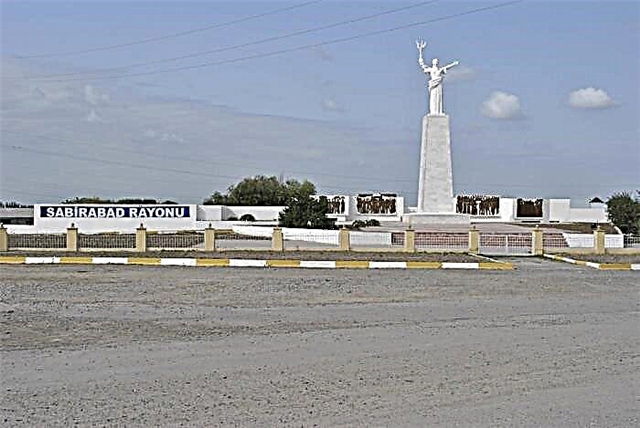
Lip
An alternative pronunciation is Cuba.Both factory and hand-made carpet weaving are developed in the city. One of the carpets is on display at the New York Metropolitan Museum. In 2003, the Olympic complex with an area of 16 hectares was put into operation. The Chukhur Hamam Bath, two mosques, the Gudialchay Bridge, the Genocide Memorial Complex and the mass grave of the victims of the 1918 massacre are landmark objects for Guba.
Population - 30,000 people (2019).

Gazakh
The former capital of the Kazakh Khanate. There are several museums in the city, including the Museum of Sultan Molla Panah Vagif and the Museum of the poet Molla Veli Vidadi. Excavations were carried out in the Damjili cave, during which they discovered a site of people of the Stone Age. The ruins of a medieval fortress are located 15 kilometers from Gazakh. Handmade carpets are the best souvenir from these places.
Population - 28,000 people (2019).

Beylagan
An important agricultural and industrial center of the country. There is even an image of grapes on the coat of arms. The city received its status in 1966. In the last century, for 50 years it was named Zhdanov in honor of a party leader. The ruins of a medieval city are located 15 kilometers from Beylagan. The excavations were carried out in several stages. The main finds occurred in the 50s of the XX century.
Population - 27,000 people (2017).
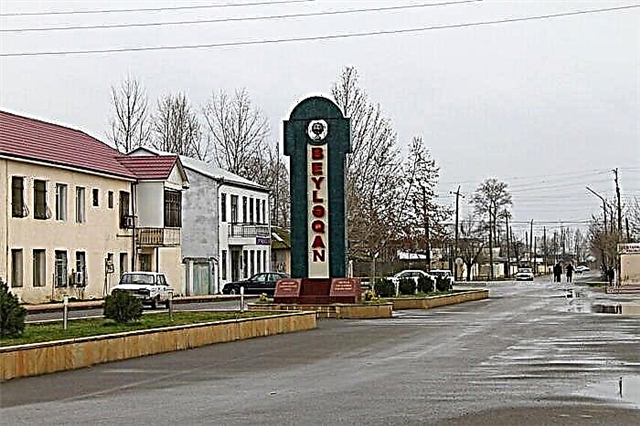
Siazan
The city is "stuck" between the Greater Caucasus and the Caspian Sea. There are several monuments and parks in Siyazan. The districts are much richer in sights. The Chirakh-Kala fortress was once part of the defense line of the Caspian coast. Now only ruins remain of it. At the foot of Mount Five Fingers, Pir Khidir Zundzha was built - a complex that attracts Muslim pilgrims.
Population - 24 300 people (2012).

Bilasuvar
It was first mentioned in chronicles in the 13th century. The economy is based on 2 large enterprises: a machine-reclamation station and a cotton ginnery. Agriculture is well developed in the district. The proximity of the Iranian border affected the culture and trade ties of Bilasuvar. Burial mounds dating from the Iron Age and the ruins of medieval fortresses are the sights.
Population - 22 800 people (2018).
Kurdamir
It stands on the left bank of the Kura River. In 2008, the Olympic Complex was inaugurated. The most popular sports are wrestling and volleyball. Kurdamir red wine has been produced for almost 100 years. It has won numerous exhibitions and festivals. Not far from the city there is an archaeological site - a settlement and a cemetery with it, dating from the Middle Ages.
Population - 22 300 people (2019).

Ismayilli
The location on the slopes of the mountains and in the valley of two rivers at once makes the local landscapes unforgettable. The district is characterized by a difference in elevation, which also affects the climate. Tourists are attracted by mountaineering centers operating all year round. Ancient mosques, fortress ruins, medieval baths are the main attractions of the city. Painted scarves and homemade cheeses are worth taking with you from Ismayilli.
Population - 20 660 people (2014).

Terter
The city received its current name only in 1991. There are 24 monuments of history and culture in Terter and the region. The most important of them are burial mounds of the Stone and Bronze Ages. Excavations have shown that the ancient local residents were engaged in the cultivation of grapes, believed in the afterlife and had a complex hierarchical system of society.
Population - 19 419 people (2010).

Goygol
Founded by colonists from the German ethnic group of the Swabians in the first half of the 19th century. There is an alcoholic beverages store at the local winery. The Ethnographic Museum took over the building of the Lutheran Church. In the vicinity, archaeologists have found an ancient burial. In the mounds, not only the deceased rested, but also their slaves, horses, as well as weapons and valuables.
Population - 17,700 people (2012).


